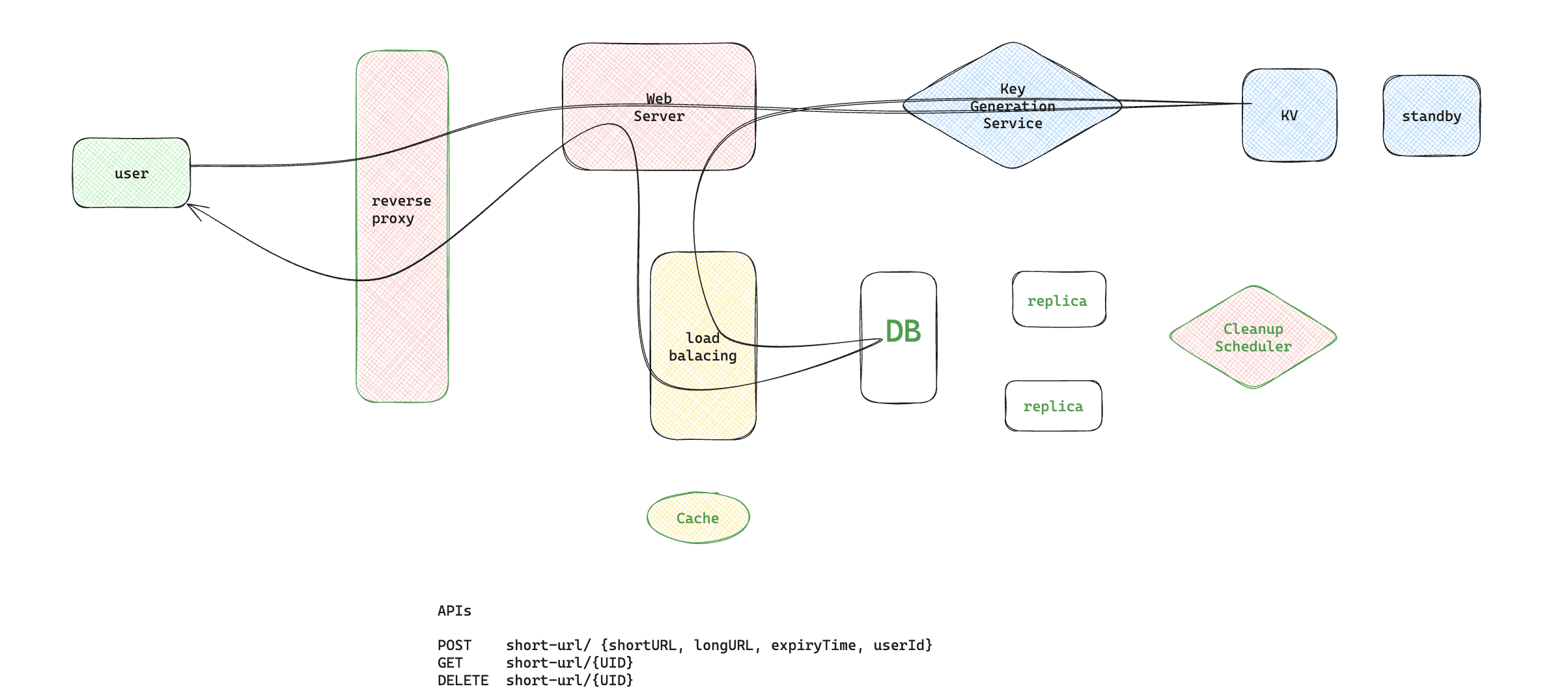URL Shortener System Design
Table of content:
URL shortening is used to create shorter aliases for long URLs.
Functional Requirements
- Given a URL, our service should generate a shorter and unique alias of it.
- When users access a short link, our service should redirect them to the original link.
- Users should optionally be able to pick a custom short link for their URL.
- Links will expire after a standard default timespan. Users should be able to specify the expiration time.
Non-Functional Requirements:
- The system should be highly available.
- URL redirection should happen in real-time with minimal latency.
- Shortened links should not be guessable (not predictable).
Capacity Estimation
- Read heavy system 1:100 write read ration
High Level Design
- Compute hash using MD5/ SHA256 of the given URL.
- Encode the hash using base62 , base36
- ShortURL key length will be 6-10 characters.
Ex: tinyurl.com/abcdefgh - If we are using base62 encoding .
62^10 = 65 Billion - Encoded string generates 21 character string. we need to take 6 chars from them as random.

KGS(Key Generation Service)
- With above approach, there is a possibility of key duplication.
- KGS will make sure all the keys inserted into key-DB are unique.
- KGS can use two tables to store keys:
- one for keys that are not used yet, and one for all the used keys.
- As soon as KGS gives keys to one of the servers, it can move them to the used keys table.
- KGS can always keep some keys in memory to quickly provide them whenever a server needs them.
Partition
- Range based partitioning
- Hash based partitioning
Algorithms
Following algorithms used in URL Shortening service.
LRU Cache
Using LinkedHashMap to create caching that gives most recently used entries
from collections import OrderedDict
import threading
class LRUCache:
def __init__(self, capacity): # size of the cache entries
self.capacity = capacity
self.cache = OrderedDict()
self.lock = threading.Lock()
def put(self, key, value):
self.lock.acquire()
self.cache[key] = CacheElement(key, value)
self.cache.move_to_end(key)
if len(self.cache) > self.capacity:
self.cache.popitem(last=False) # pop item last=False means remove from left
self.lock.release()
def get(self, key):
if key not in self.cache:
print("return -1")
return -1
# raise Exception("Entry Not found")
self.cache.move_to_end(key)
# if creation time older than 1 hr 10 , 12-1
print(f"Returning {key}")
return self.cache[key]Encoding
def base_encode(input):
map = "abcdefghijklmnopqrstuvwxyzABCDEFGHIJKLMNOPQRSTUVWXYZ0123456789"
shortURL = ""
length = 62
while input > 0:
shortURL += map[input % length]
input // length
return shortURL